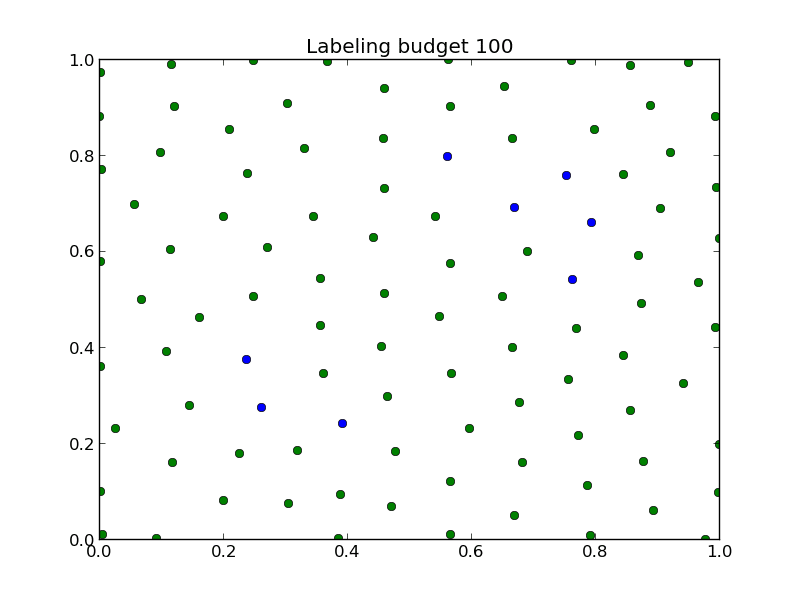Active learning with mismatch-first farthest-traversal
Last modified 2022-03-04
Active learning is typically used when unlabeled data is abundant, but labels are expensive or difficult to obtain. It aims at learning an optimal model with a limited labeling budget. Mismatch-first farthest-traversal has been proposed for sound classification and sound event detection. However, it has a good potential to be extended to other problems.
An imaginary problem
The visualization of the algorithm uses a binary classification problem, with 5000 randomly generated data points. The data points belong to two classes, visualized with green and blue. The traget decision boundaries are marked with two blue triangles. The labeling budget is 500. In each batch, 100 data points are queried for labels.
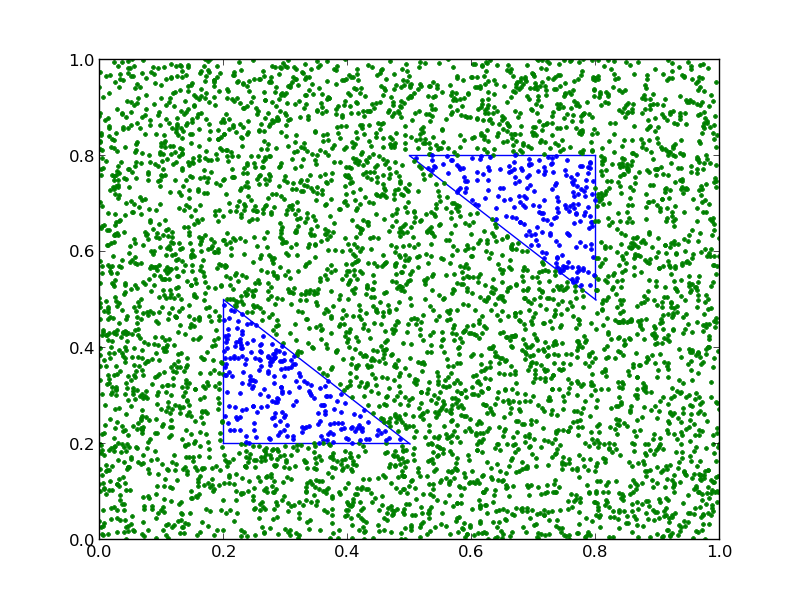
Detailed visualization on the model predictions and sample selection
| Model prediction | Sample selection |
|---|---|
| Initial batch, no model available | 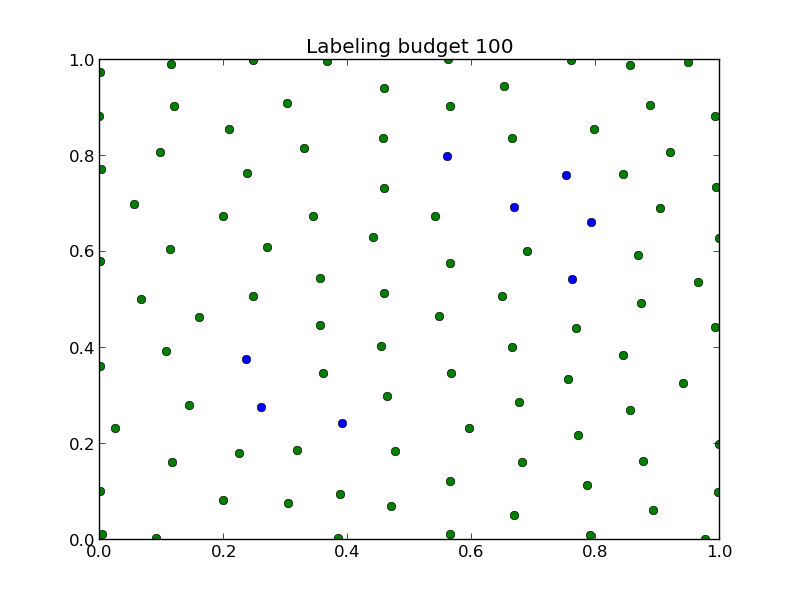 |
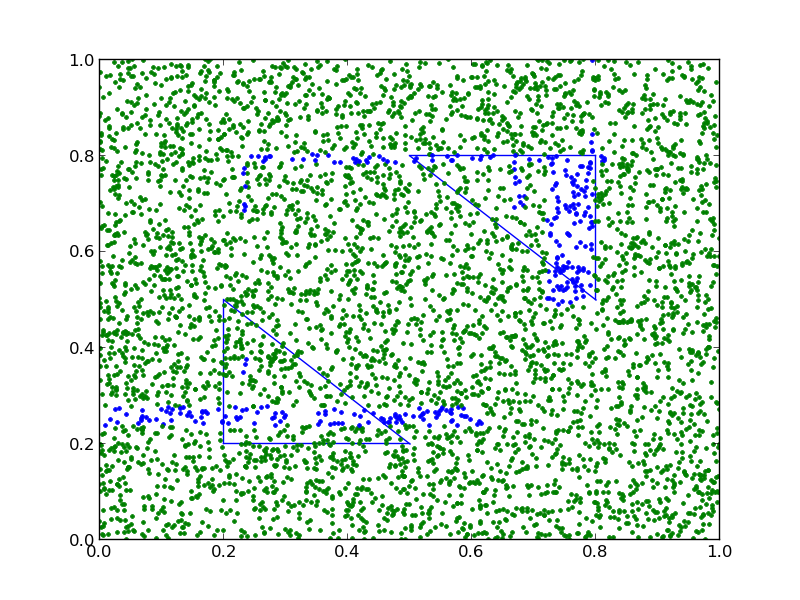 |
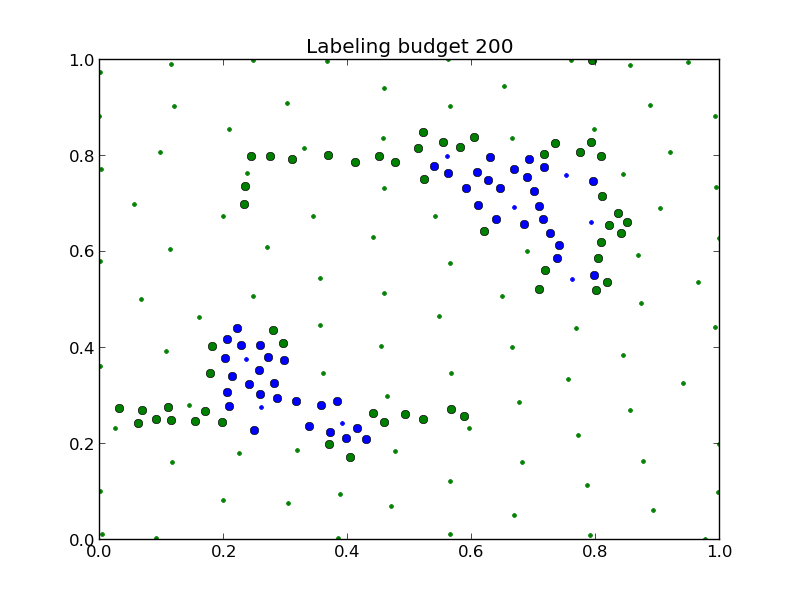 |
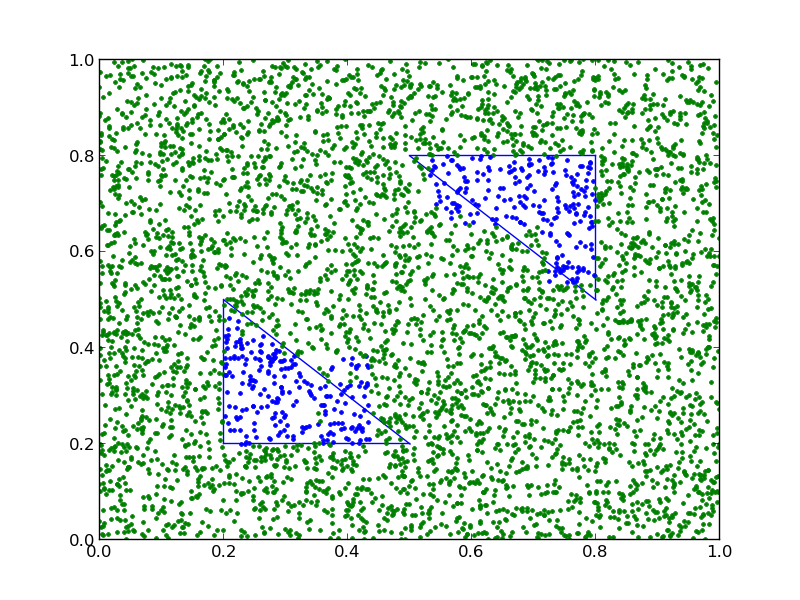 |
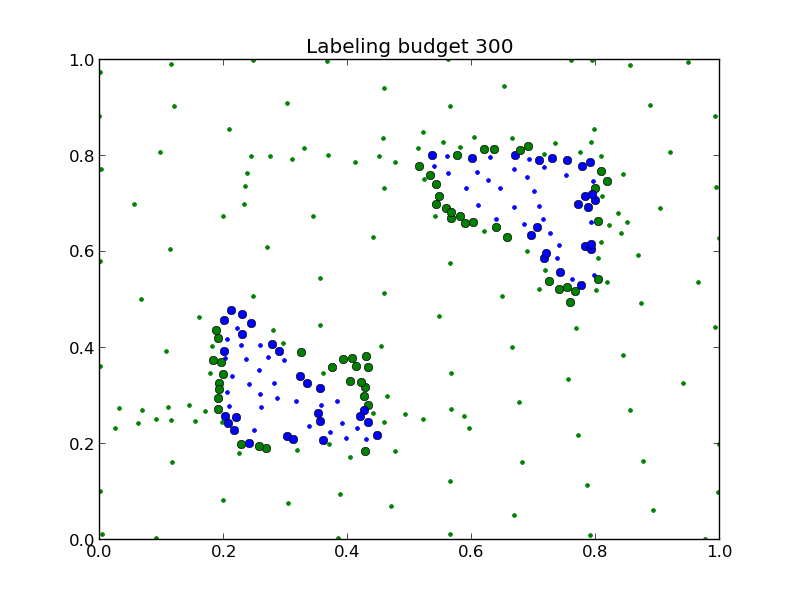 |
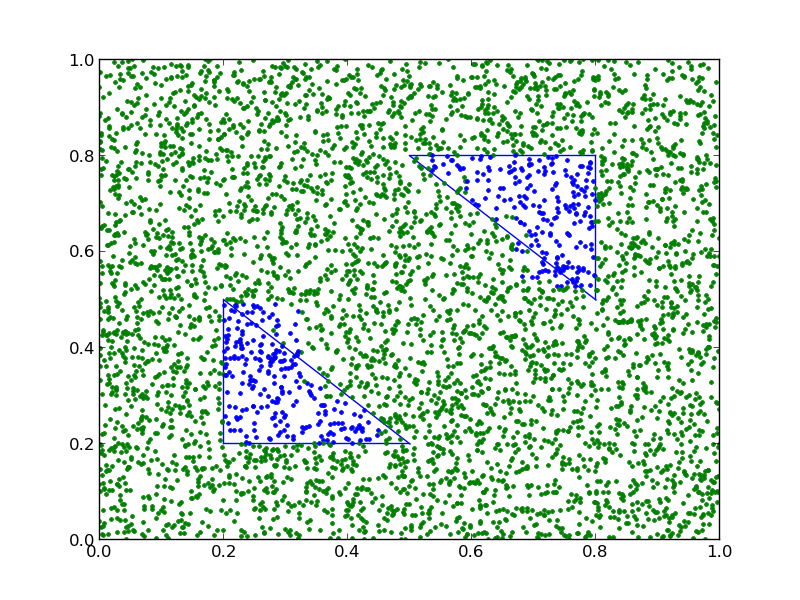 |
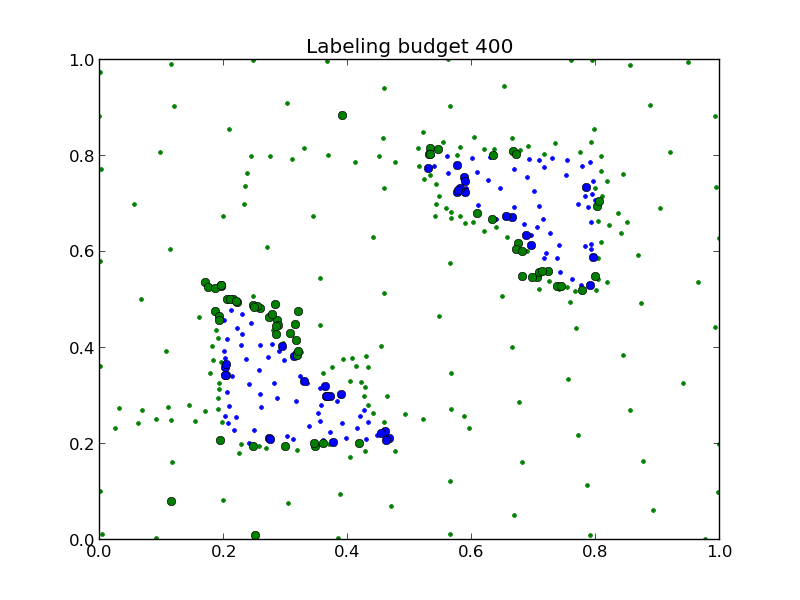 |
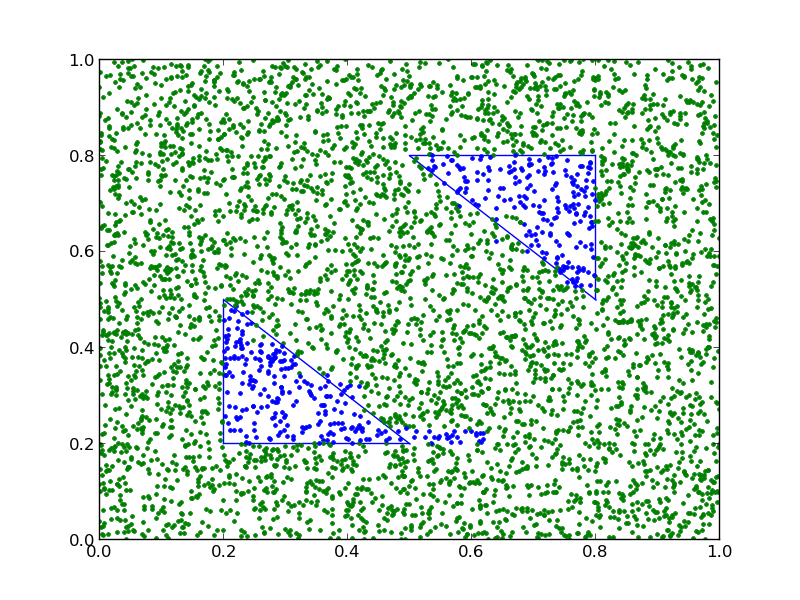 |
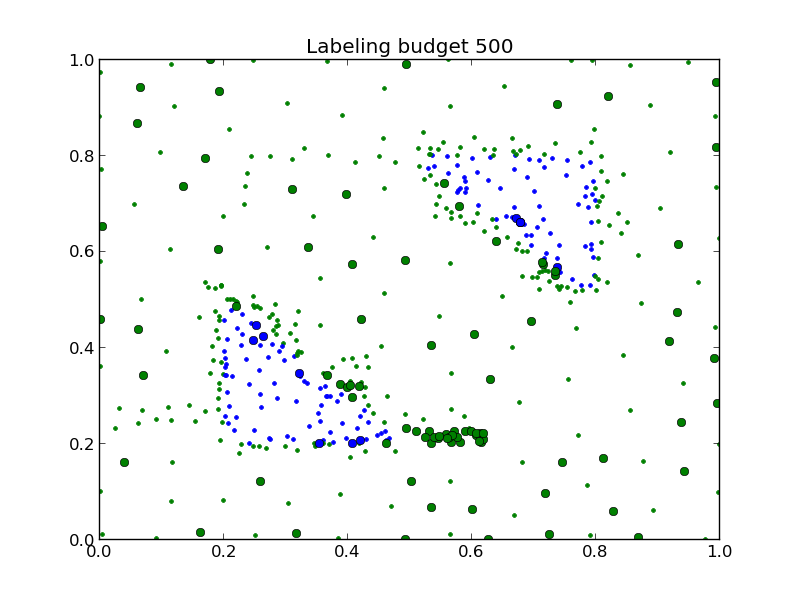 |
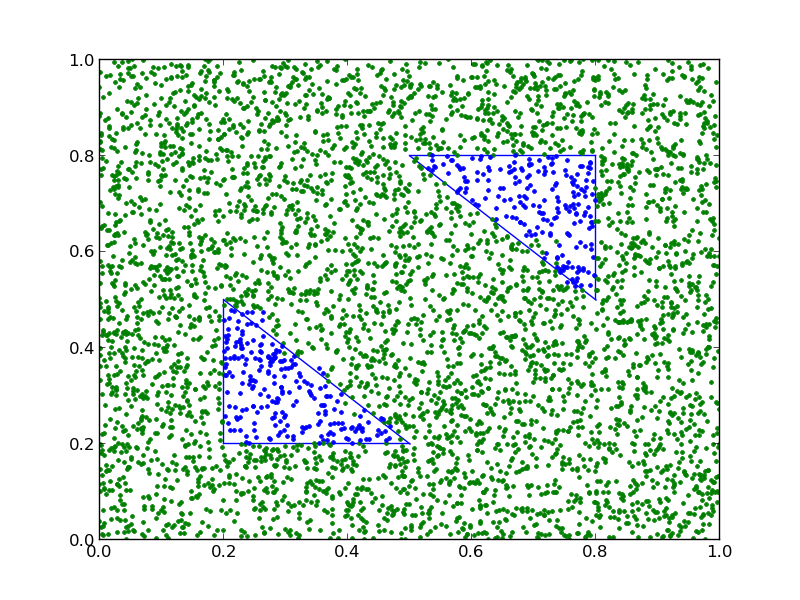 |
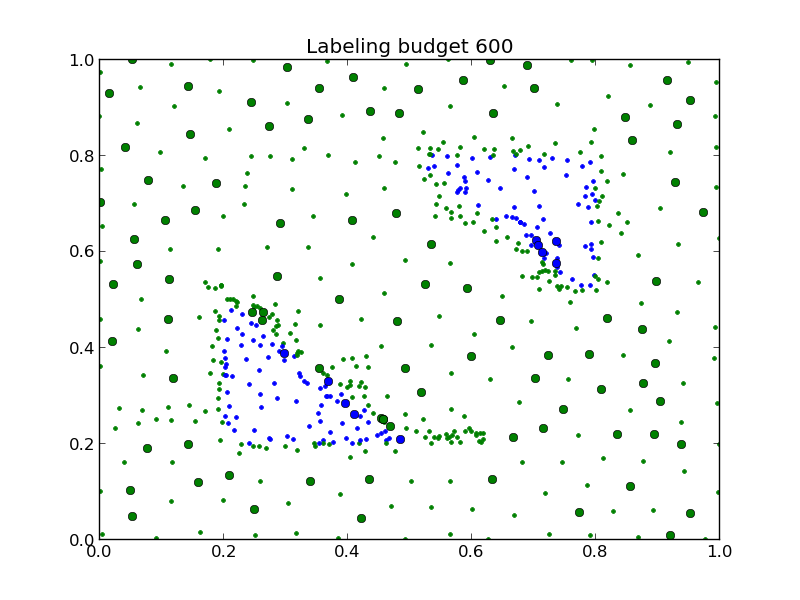 |
Animated labeling processes of different active learning processes
Farthest-traversal
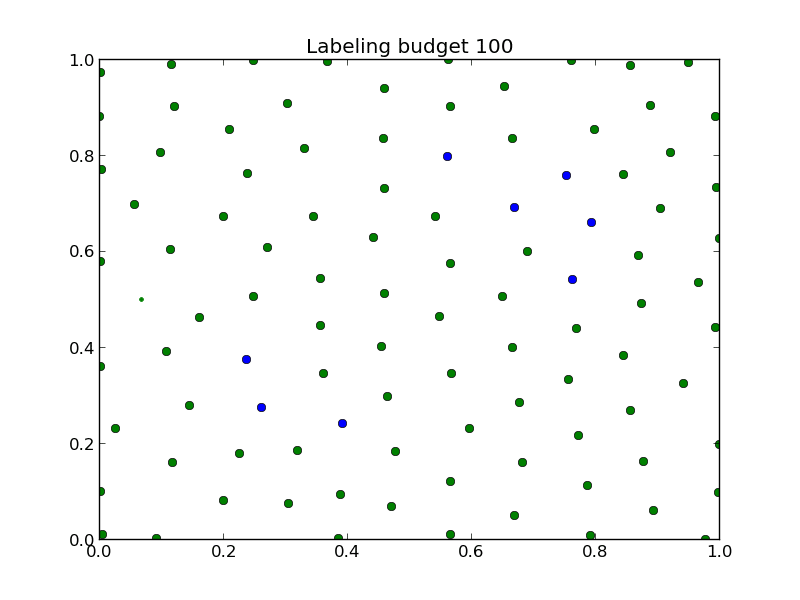
Uncertainty Sampling
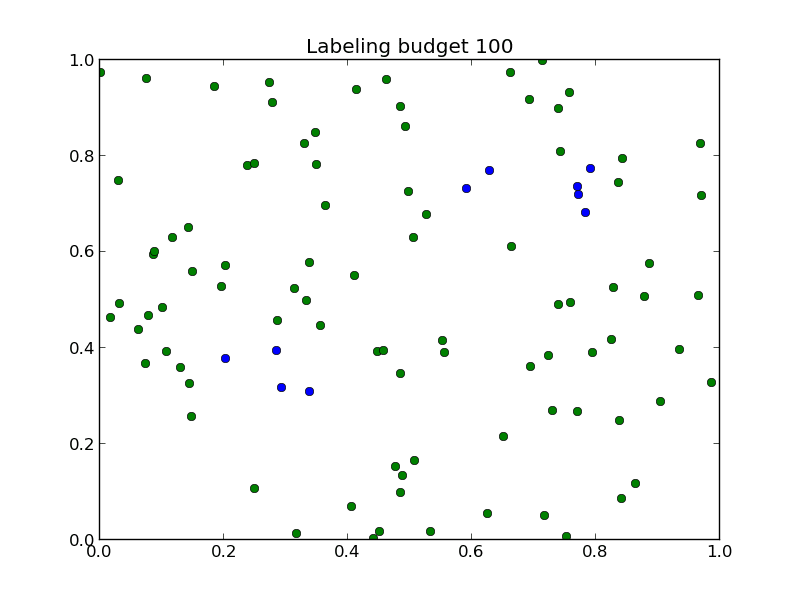
Misatch-first farthest-traversal
